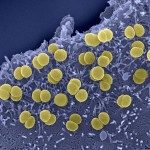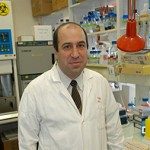Link to Pubmed [PMID] – 15365005
J Clin Microbiol 2004 Sep; 42(9): 4158-63
The occurrence of a clonal outbreak of serogroup W135 (of the electrophoretic type 37 [ET-37] clonal complex) meningococcal disease among Hajj pilgrims in 2000 has led to enhanced surveillance of the evolution of this particular serogroup, formerly considered rare, in invasive infections. Since the first case of meningococcal disease due to a serogroup W135 strain was detected in France in 1994, all isolates were characterized phenotypically. We further used phenotypic and genotypic approaches to type the 101 serogroup W135 strains isolated from patients with invasive meningococcal diseases in France in 2001 and 2002. Overall, 55% of these isolates had Hajj strain-related phenotypes (60 and 52% in 2001 and 2002, respectively), although only 45% belonged to the ET-37 clonal complex. Moreover, pulsed-field gel electrophoresis of the ET-37 clonal complex isolates showed that only 32% of the serogroup W135 isolates were indistinguishable from the 2000 Hajj-related strain. Our results suggest the continuous emergence of new genetic lineages of serogroup W135 independently of the 2000 global outbreak.

